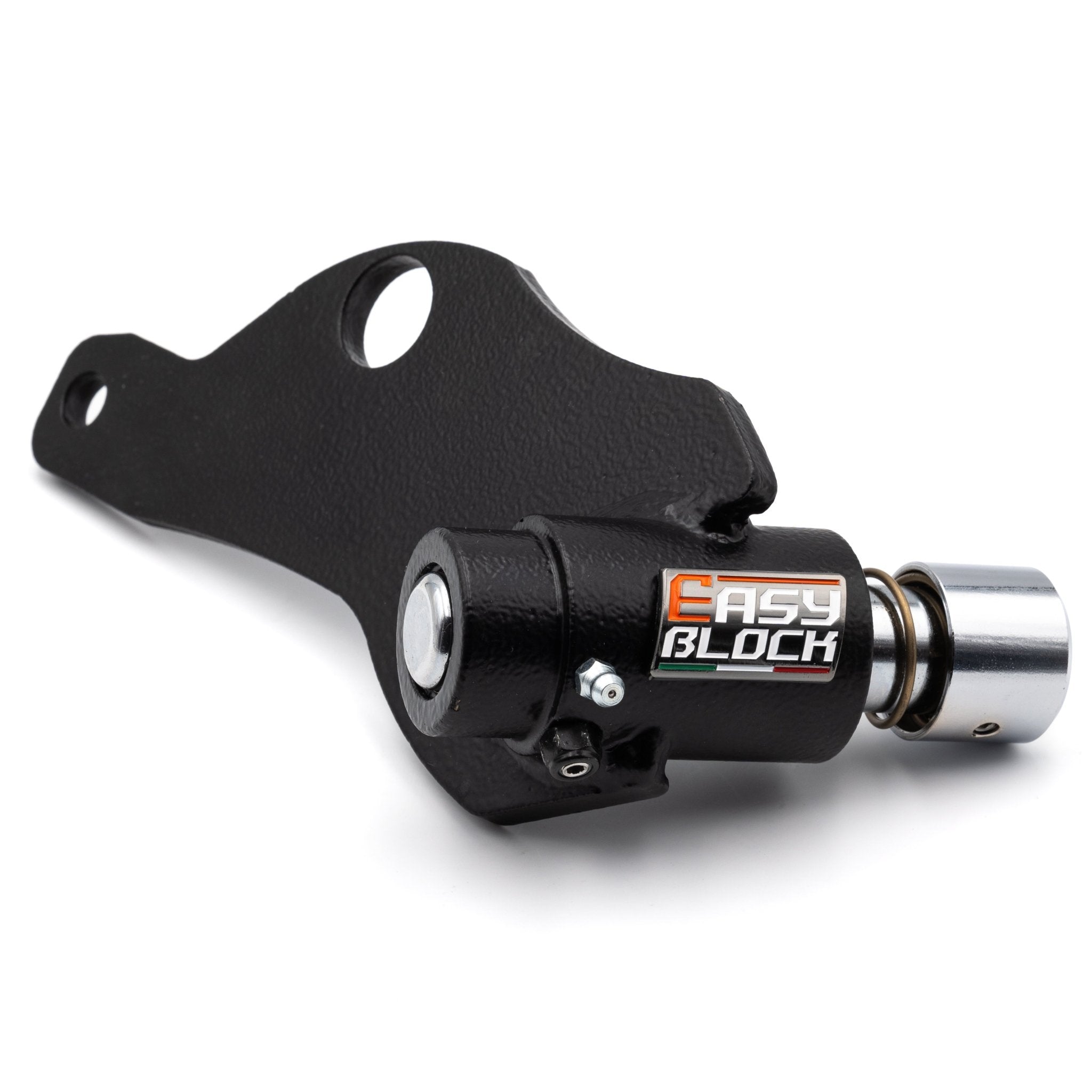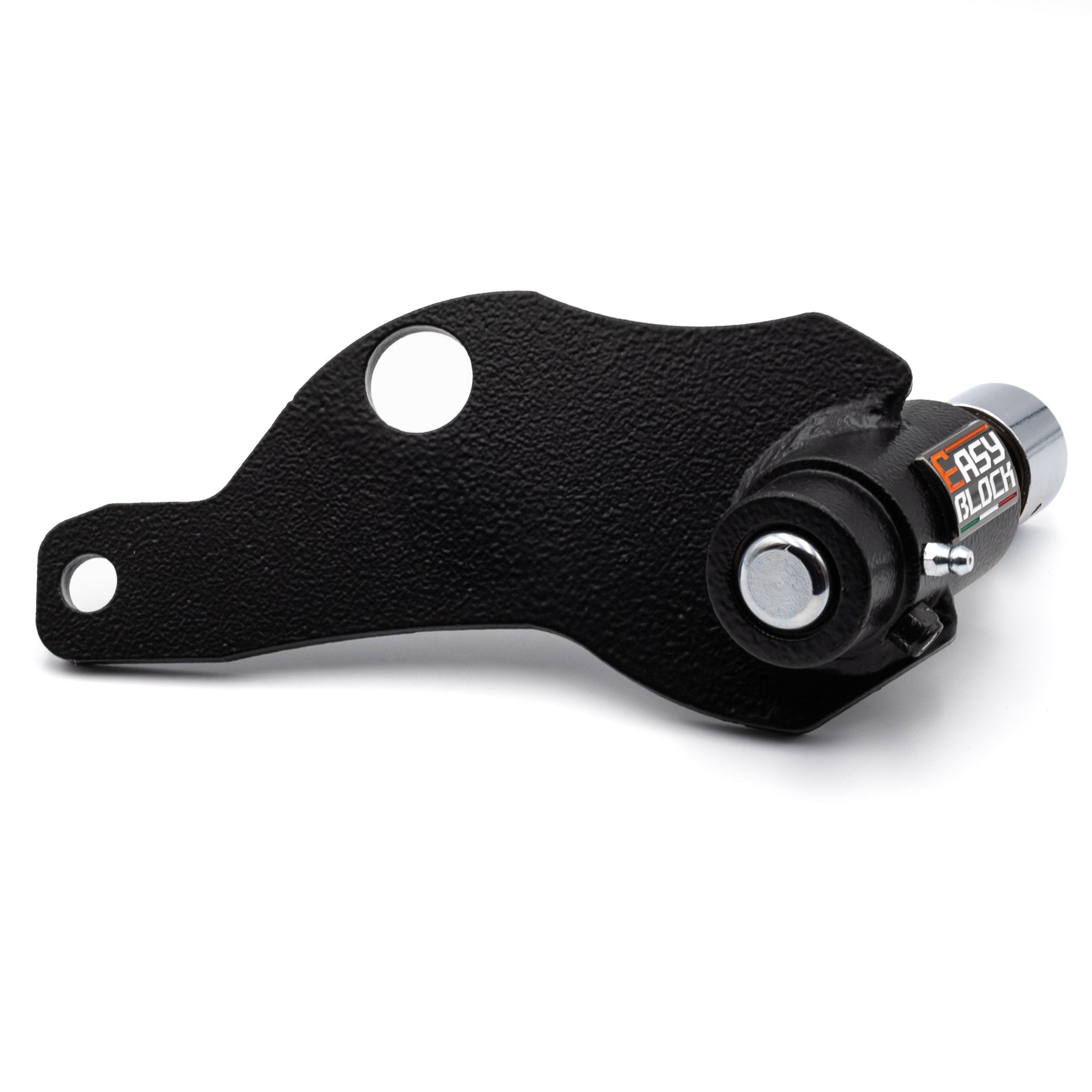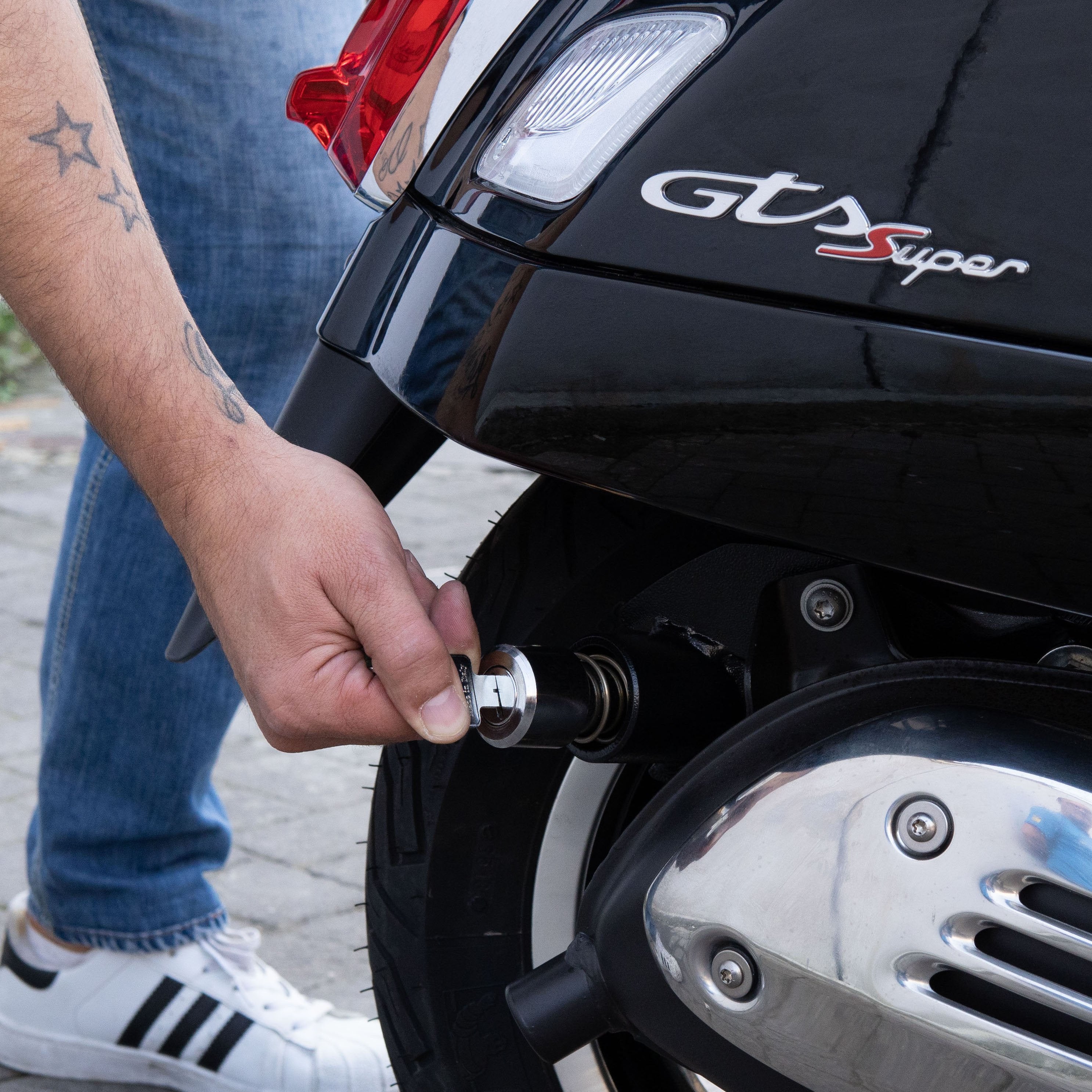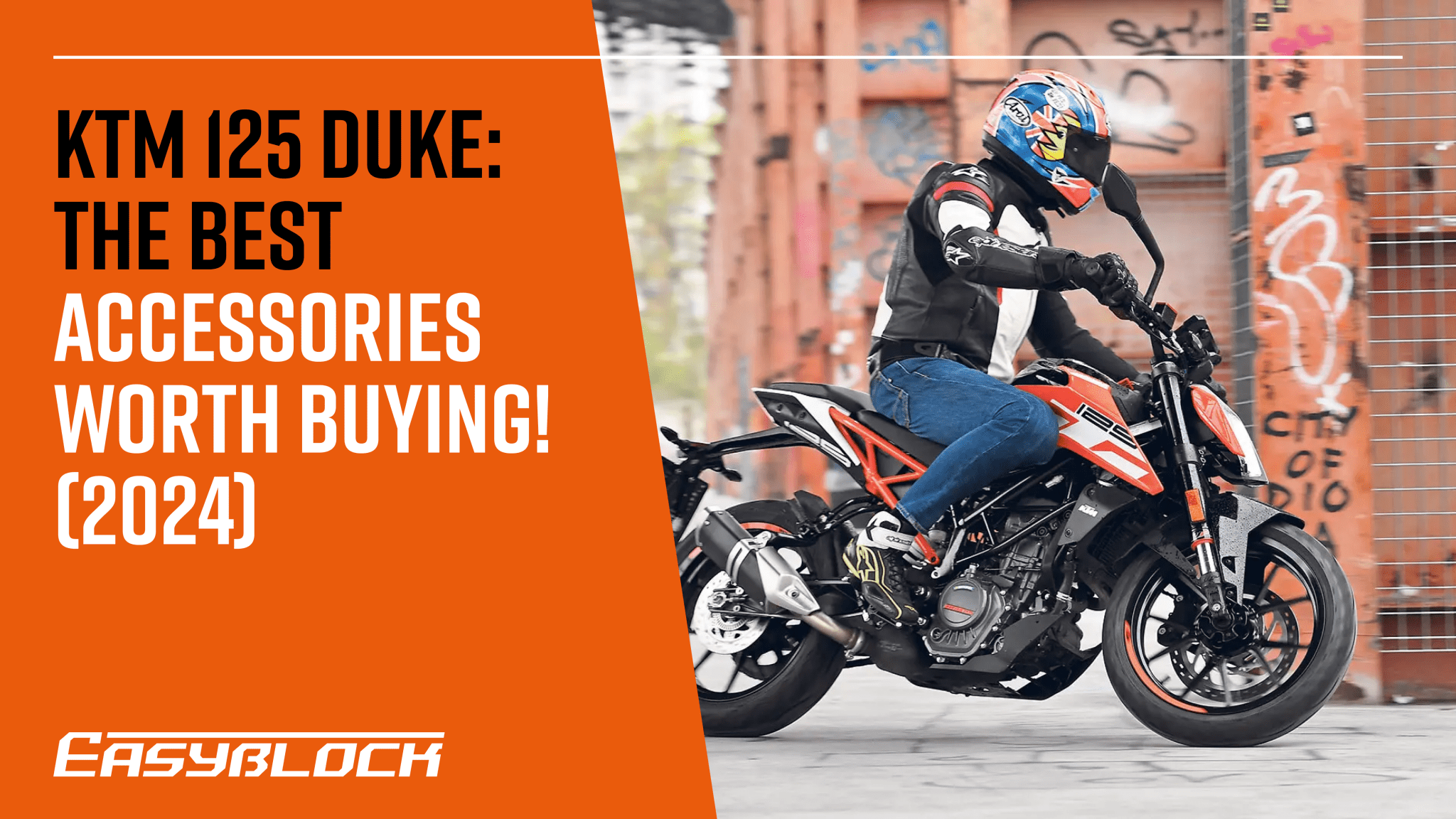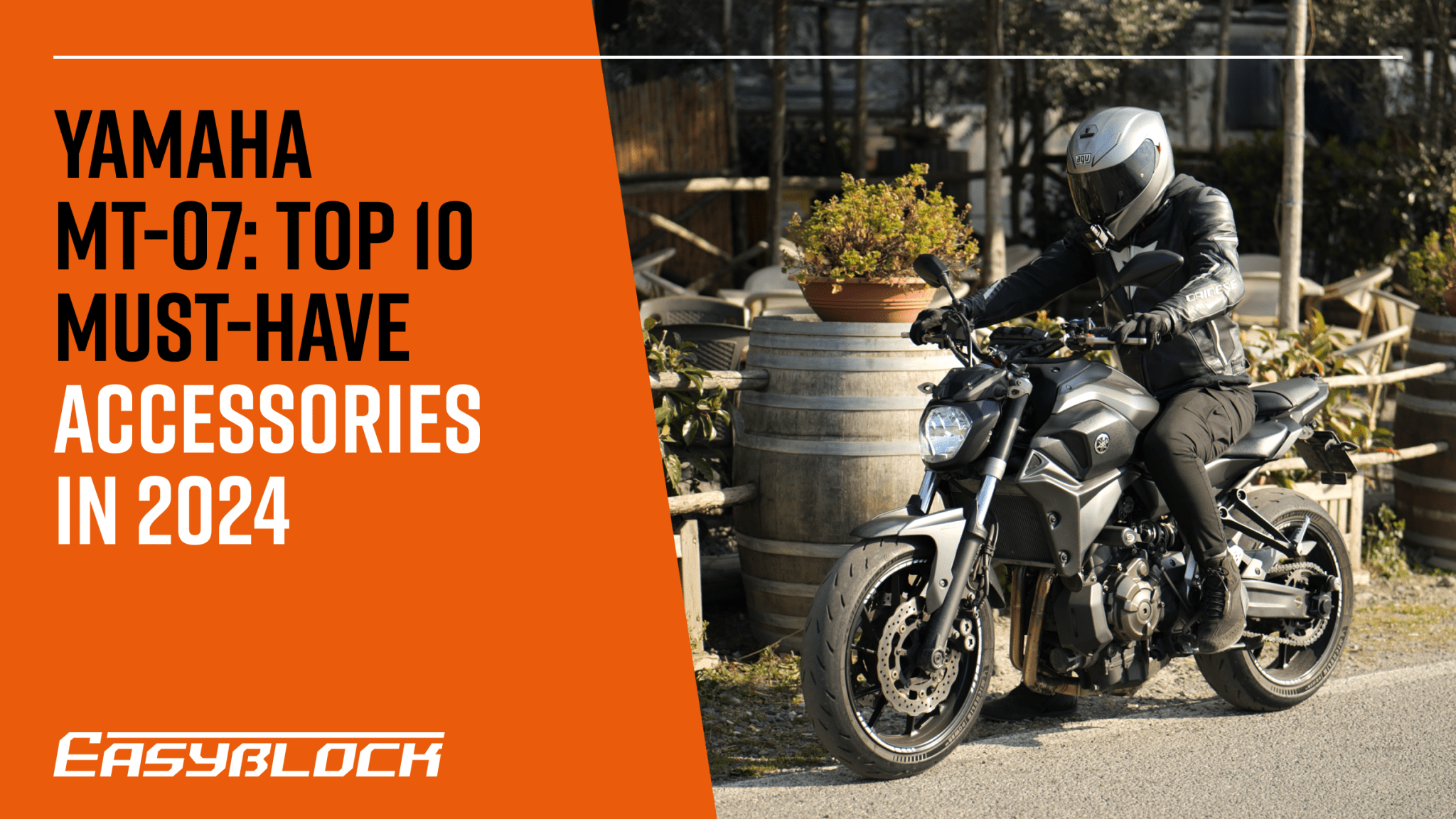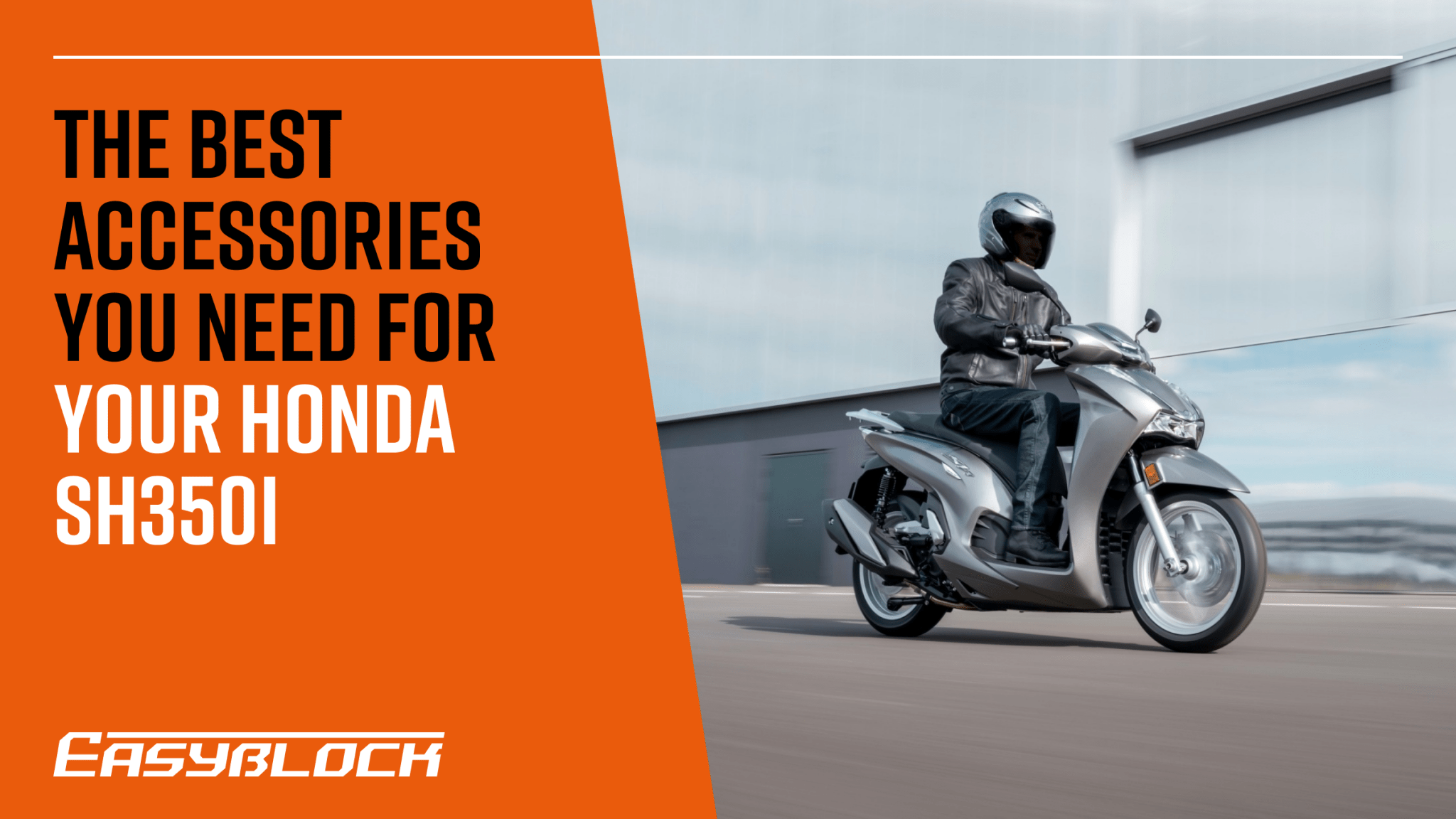The Ultimate Guide to Motorcycle Security

Motorcycles are more than just a mode of transportation. They are a passion for many riders around the world. However, with the rise of motorcycle theft, it is crucial to protect your motorcycle from being stolen or damaged.
In this guide, we will provide you with practical tips and tricks to effectively secure your motorcycle. These include choosing the right parking location, investing in high-quality locks and alarm systems, utilizing GPS tracking devices, and using motorcycle covers.
Additionally, we will discuss the importance of taking additional security measures to protect your valuable asset. We aim to help you feel confident and secure when leaving your motorcycle parked or stored.
Whether you're a seasoned rider or a new enthusiast, this guide will help you with the knowledge and tools to protect your motorcycle and ride worry-free. Let's get started!
Motorcycle Theft Statistics
In recent years, the United Kingdom has experienced a significant increase in motorcycle theft. This concerning trend highlights the urgent need for enhanced motorcycle security.
- Motorcycle Theft Rates: According to data from the UK's National Vehicle Crime Intelligence Service (NaVCIS), motorcycle theft has increased, with thousands of bikes reported stolen yearly. In some urban areas, the number of stolen motorcycles has even doubled in recent years, with cities like London, Manchester, and Birmingham being hotspots for these thefts.
- Targeted Bikes: Thieves often target high-value and popular motorcycle brands, including Honda, Yamaha, Kawasaki, and Suzuki, which make up 85% of all stolen motorcycles. High-performance bikes are particularly at risk, as their parts can be quickly sold on the black market for a substantial profit.
- Recovery Rates: Unfortunately, the recovery rate for stolen motorcycles in the UK remains low, with only around 16% of stolen bikes being found and returned to their owners. This is due in part to the ease with which thieves can dismantle the bikes and sell their parts, as well as the challenge of tracing unregistered or cloned vehicles.
- Impact on Insurance Premiums: Due to the rising theft rates, insurance premiums for motorcycle owners have increased significantly. This has created an additional financial burden on bike owners, making effective security measures even more essential.
Understanding Motorcycle Theft
As a rider, it is essential to understand the most common methods used by thieves, the typical targets for theft, and the places where theft commonly occurs.
Common methods of motorcycle theft
- Hotwiring: It involves bypassing the motorcycle's ignition system to start the engine without a key. Thieves use wires to short-circuit the electrical system, allowing them to start the engine and ride away.
- Breaking the steering lock: Thieves may use a hammer or other tool to force the lock open or brute force to break the lock entirely.
- Lifting the motorcycle: Thieves may also lift the motorcycle onto a truck or van and drive away. This method is more common for larger motorcycles or those parked in isolated areas.
- Van or truck theft: Thieves may also steal entire vans or trucks loaded with motorcycles, which is a more organised and sophisticated approach to theft.
Typical targets for thieves
- High-end motorcycles: A primary target for thieves due to their high value and valuable parts. Thieves may disassemble the motorcycle and sell the parts individually on the black market.
- Popular models: These models are in high demand, making them easier to sell. They are often stolen for resale rather than dismantling for parts.
- Unsecured or poorly secured motorcycles: Unsecured or poorly secured motorcycles are more likely to be stolen. Thieves look for motorcycles that are easy to steal, such as those without locks or alarms.
Places where theft commonly occurs
- Public parking lots: A common target for motorcycle theft, as they offer easy access for thieves to steal motorcycles quickly. Thieves often scout parking lots looking for high-value motorcycles and may use bolt cutters to remove locks or alarms.
- Residential areas: Thieves can easily lift the motorcycle onto a truck or van and drive away. Thieves may also target motorcycles parked in driveways or garages, and they may enter homes to steal keys.
- Events and gatherings: Motorcycle shows or rallies, are also targets for motorcycle theft. Thieves know that there will be many motorcycles in one location, making it easier to steal them quickly.
Motorcycle Security: Physical Measures
Physical measures such as locks, chains, ground anchors, steering locks, and motorcycle covers can provide an extra layer of security when it comes to protecting your motorcycle from theft.
This section will explore the different types of locks and chains, ground anchors, steering locks, and motorcycle covers and discuss how to choose the right one for your motorcycle.
Motorcycle Locks
Locks and chains are an essential component of motorcycle security. There are several types, including disc locks, U-locks, chain locks, and grip locks. Each type of lock has its pros and cons, as outlined below.
Locks are one of the most commonly used physical security measures for motorcycles, and there are several types of locks to choose from. Each type of lock has its advantages and disadvantages. Understanding these can help you to choose the right lock for your motorcycle.
Disc Locks
Disc locks are lightweight, portable, and easy to use. They work by attaching to the brake disc of the motorcycle and preventing the wheel from turning.
Disc locks are an excellent visual deterrent and can be hard to remove without a key. However, disc locks may only fit some motorcycles, offering less protection than heavier locks. The pros and cons of disc locks are summarised below:
|
Pros |
Cons |
|
Lightweight and easy to use. |
They may not fit all motorcycles. |
|
Portable and versatile. |
Offers less protection than heavier locks. |
|
Hard to remove without a key. |
|
Some top-selling disc locks on the market include the Kryptonite Evolution Series 4 Disc Lock, the Abus Granit Sledg 77 Disc Lock, and the Xena XX-6 Series Disc Lock.
Disc Locks Recommendations:
 |
 |
 |
|
|
|
|
£49.95 |
£119.99 |
£100 |
EasyBlock - The Ultimate Wheel Lock
Keeping your motorcycle secure is all about consistency. But carrying around heavy chains or padlocks can be a hassle if you don't use them every time you park.
That's where EasyBlock comes in. It's the perfect solution for riders who want quick and convenient security without the extra weight.
EasyBlock is the ultimate solution for quick, convenient security when parking your motorcycle. Designed to provide unparalleled protection against opportunistic thieves, EasyBlock is the only wheel lock installed directly on the motorcycle and takes just a second to lock.
You only need to kick the spring-loaded lock to activate it, which activates a 25mm steel bolt to immobilise the rear wheel. This ensures that your motorcycle stays securely in place, deterring unauthorized attempts to move it.
While an EasyBlock may not replace high-end chains that can defend against more determined attacks, it is a powerful deterrent. Its presence alone significantly reduces the risk of theft, acting as a robust barrier that discourages thieves.
In fact, EasyBlock claims to decrease theft rates by up to 90% for some riders. Choose EasyBlock and enjoy peace of mind knowing your motorcycle is protected quickly and efficiently.

|

|
| Scooter Wheel Lock | Motorcycle Sprocket Lock |
|
|
| £199.99 | £199.99 |
Benefits of EasyBlock
-
High Security: EasyBlock is engineered to offer a high level of convenient security for your motorcycle. Its unique design and anti-pick lock cylinder make it exceptionally resistant to tampering.
-
Easy to Use: With its user-friendly features, you can quickly lock and unlock your motorcycle without any hassle. The kick-activated mechanism ensures that securing your bike is a matter of seconds.
-
Designed for your bike: Each EasyBlock is designed to fit a specific motorcycle model. This customised fit provides an added layer of security, as it ensures a snug and secure attachment to your bike.
-
Durability: Built with precision engineering and high-quality materials, EasyBlock is designed to withstand the rigors of daily use. It offers long-lasting durability, ensuring reliable protection for your motorcycle over time.
-
Sleek and Compact: EasyBlock seamlessly integrates with the aesthetics of your motorcycle. Its sleek and compact design not only enhances the visual appeal of your bike but also ensures that it doesn't interfere with its functionality or manoeuvrability.
- Highly-Rated: The EasyBlock Lock boasts a 5-star rating from hundreds of riders. It's no wondering it's becoming the top choice by thousands of riders every year.
Cons:
- Price: While EasyBlock provides exceptional security and convenience, it is a premium product that comes at a higher price than traditional locks. However, the added peace of mind and protection make it a worthwhile investment for motorcycle owners.
- Compatibility: Although EasyBlock fits a wide range of current motorcycles, there is a limited offering in older motorcycles and sports bikes.
In summary, EasyBlock stands out as the ultimate motorcycle security system when it comes to convenience.
With its top-notch security features, ease of use, customized fit, durability, and sleek design, EasyBlock ensures that your motorcycle remains safe and protected wherever you go. Choose EasyBlock and experience the pinnacle of motorcycle security.
You can order the right lock for your bike on our website or visit any of our dealers in the UK and Europe.
D-Locks / U-Locks
D-locks are known for their high level of protection and resistance to bolt cutters and saws. They work by attaching to the frame or wheel of the motorcycle, preventing it from moving.
D-locks are versatile and easy to use but can be heavy and bulky. They may only fit some motorcycles and can scratch the bike if not used correctly. The pros and cons of D-locks are summarised below:
|
Pros |
Cons |
|
High level of protection. |
Heavy and bulky. |
|
Resistant to bolt cutters and saws. |
May not fit all motorcycles. |
|
Versatile and easy to use. |
May scratch the bike if not used correctly. |
Some top-selling D-locks on the market include the Kryptonite New York Fahgettaboudit D-Lock, the OnGuard Brute STD U-Lock, and the Abus Granit X-Plus 540 U-Lock.
 |
 |
 |
|
|
|
|
£69.99 |
£249.99 |
£54.99 |
Chain Locks
Chain locks are one of the most simple forms of motorcycle security, using a big chain and padlock to secure your motorcycle in place or to a fixed object, such as an anchor or a post.
Chain locks can be hard to cut with bolt cutters depending on the thickness (greater than 13mm becomes more difficult for thieves with bolt cutters), but the more secure the chain, the heavier and harder to carry it will become.
Chain and lock combinations may come as two separate units, such as a high-quality chain paired with a separate lock by the same or separate brand, such as a Pragmasis Chain and Abus Lock, or the lock can be attached and integrated into the chain itself. The pros and cons of chain locks are summarised below:
|
Pros |
Cons |
|
Highly versatile and can secure multiple motorcycles. |
Heavy and bulky. |
|
Hard to cut with bolt cutters. |
It can scratch the bike if not used correctly. |
|
Not as portable as other locks types |
Some of the top-selling chain locks on the market are featured below:

|
 |
 |
|
|
Squire Stronghold IC/850 Integrated Lock & Chain | Oxford Monster Chain(14mm Hex) & Padlock | |
|
|
-Ultra-strong padlock made from hardened boron steel armour casing. • Double locking mechanism. • 14mm Hex chain. |
|
| £159.99 |
£169.l99 |
£109.99Grip Locks |
Grip locks
are easy to use and lightweight. They work by locking the throttle or brake lever, making it harder for thieves to ride or push the motorcycle away.
Grip locks offer a visual deterrent to thieves, and as 80% of thefts are opportunistic, using a Grip Lock is an excellent option, especially when layered with another layer of protection.
It is worth noting that there are a lot of cheap counterfeit models on the market, so buying either the original Grip-Lock or one from a well-known brand is recommended.
The pros and cons of grip locks are summarised below:
|
Pros |
Cons |
|
Easy to use and lightweight. |
Offers less protection than heavier locks. |
|
Offers a visual deterrent to thieves. |
May not fit all motorcycles. |
|
Very convenient and excellent as an added level or protection |
Not as portable as other locks. |
Some of the top-selling grip locks on the market include the Handlebar Grip Lock, the Oxford Boss Alarm Lock, and the Xena XZZ6L-SS Alarm Disc Lock.
|
|
|
|
|
|
£49.99 |
£94.99 |
How to Choose the Right Lock or Chain
When choosing a lock or chain for your motorcycle, several factors must be considered. First, you should look for a lock or chain that is strong and durable and offers a high level of resistance to cutting, sawing, and other forms of tampering.
Look for locks and chains tested and certified by independent organisations, such as Sold Secure or ART.
Second, you should consider the size and weight of the lock or chain and whether it is easy to carry and use. A heavy-duty D-lock or chain lock may offer the highest level of protection, but it may be too heavy or large to carry around. A smaller, more portable lock or chain may be more convenient, but it may not offer the same level of security.
Finally, consider your specific needs and the level of risk in your area. Suppose you frequently park your motorcycle in high-risk areas like urban centres or public parking lots.
You may need a heavier and more secure lock or chain in that case. A lighter and more portable lock or chain may be more convenient if you use your motorcycle for work and stop often.
Proper Use and Placement of Locks and Chains
Proper use and placement of locks and chains are essential for maximising their effectiveness. Securing the motorcycle to a fixed object, such as a ground anchor or a sturdy post, is important when using a lock or chain.
Avoid using objects that can be easily cut or removed, such as trees or flimsy fences. Suppose there are no objects around to attach your chain to. In that case, consider attaching it to another bike by looping the chains together.
It is also essential to place the lock or chain in a visible location, which can be a visual deterrent to potential thieves. Avoid placing the lock or chain where it can be hidden or obscured by other objects.
Finally, always follow the manufacturer's instructions for proper use and maintenance of the lock or chain. Regularly inspect the lock or chain for signs of wear or damage, and replace it if necessary.
Ground Anchors
Ground anchors are an effective way to secure your motorcycle to a fixed object, such as a concrete floor or a wall. There are several types of ground anchors, including bolt-down anchors, wall-mounted anchors, and in-ground anchors.
When choosing a ground anchor, look for one that is strong, durable, and designed to resist cutting and tampering. Make sure the ground anchor is installed in a secure location and that it is anchored to a solid surface such as a concrete floor or wall.
To use a ground anchor, simply attach your lock or chain to the anchor, and secure it to your motorcycle as usual. One thing to ensure is that you buy an anchor compatible with your chain's thickness.
When buying a chain for home use, riders typically use heavy-duty chains, as they don't have to be carried around and can stay attached to the anchor, so double-check this before making holes in your floor.
 |
 |
 |
|
|
|
|
£79.99 |
£69.99 |
£99.99 |
Steering Locks
Steering locks are a simple and effective way to secure your motorcycle. They work by locking the handlebars at an angle, making it difficult for thieves to push or ride the motorcycle away.
When using a steering lock, make sure to turn the handlebars fully to one side and engage the lock. This will prevent the motorcycle from being pushed or ridden away.
It is important to note that steering locks should be combined with other security measures, such as locks and chains. While steering locks can be effective at preventing ride-away theft, they offer little protection against other forms of tampering, such as cutting or lifting the motorcycle.
Motorcycle Covers
Motorcycle covers can offer several benefits for motorcycle security. First, it can help to prevent theft by making it more difficult for thieves to identify and target your motorcycle.
Second, it can protect your motorcycle from weather and other environmental factors, which can help to extend its lifespan.
When choosing a motorcycle cover, look for one that is made from durable and weather-resistant materials and that is designed to fit your motorcycle's size and shape. A loose or tight cover can make it more challenging to secure your motorcycle properly.
We also recommend a cover that offers some thermal insulation around the exhaust area, as it is common for the cover to melt to the exhaust if it is put on after riding or if the cover is made from low-quality materials.
When using a motorcycle cover, make sure to secure it properly to prevent it from being removed or tampered with.
Most good covers have a hole that allows you to use a lock & chain to secure a motorcycle to a fixed object, such as a ground anchor or a sturdy post.
 |
 |
 |
|
|
|
|
£79.99 |
£24.99 |
£24.99 |
Overall it is highly recommended to follow the police's advice to use a combination of at least three different ways to deter thieves, which is highlighted in their campaign to "Lock, Chain, Cover", which will significantly reduce the risk of motorcycle theft.
By taking a multi-layered approach to motorcycle security, you can protect your investment and enjoy Peace of mind knowing that your motorcycle is safe and secure.
Electronic Security Devices: Motorcycle alarms
Motorcycle alarms are essential components of an effective motorcycle security system. They act as deterrents by emitting loud noises or visual signals to alert owners and passersby of potential theft attempts.
Types of motorcycle alarms
There are several types of motorcycle alarms available, each offering unique features and levels of protection. Some of the most common types include:
- Audio alarms: These alarms emit a loud siren when triggered, drawing attention to the motorcycle and potentially scaring off thieves.
- Visual alarms: These alarms use flashing lights, often combined with an audio alarm, to make the motorcycle more noticeable in case of theft attempts.
- Two-way alarms: These advanced systems allow the owner to receive notifications on a remote device, such as a smartphone or keyfob, when the alarm is triggered.
Features to look for in a motorcycle alarm
When selecting a motorcycle alarm, consider the following features for enhanced security and ease of use:
- Adjustable sensitivity: This feature allows you to customise the alarm's sensitivity, reducing the likelihood of false triggers.
- Backup battery: A backup battery ensures the alarm continues functioning even if the primary power source is disconnected.
- Tamper-proof design: High-quality alarms come with additional security features, such as resistant casings, preventing thieves from quickly disabling the alarm.
- Remote control: A remote control allows you to arm and disarm the alarm from a distance, providing added convenience and control.
- Easy installation: Installing a motorcycle alarm typically involves connecting the device to your motorcycle's electrical system. It's crucial to follow the manufacturer's instructions carefully and consult a professional if you need clarification on any aspect of the installation process. Once installed, test the alarm to ensure it functions correctly and familiarise yourself with its features and settings.
GPS trackers
GPS trackers are valuable tools for enhancing motorcycle security, as they enable owners to track the location of their motorcycles in real time.
Benefits of GPS tracking
- Real-time tracking: GPS trackers provide real-time location information, allowing you to monitor your motorcycle's whereabouts and respond quickly to potential theft incidents.
- Geofencing: Many GPS trackers offer geofencing capabilities, enabling you to set up virtual boundaries and receive alerts if your motorcycle leaves the designated area.
- Theft recovery: In the unfortunate event that your motorcycle is stolen, a GPS tracker can help law enforcement locate and recover your property.
- Peace of mind: Knowing that your motorcycle's location is constantly monitored provides a sense of security and reduces anxiety about theft.
Types of GPS trackers
There are two primary types of GPS trackers for motorcycles:
- Hardwired: These devices are connected directly to your motorcycle's electrical system and offer a more permanent, reliable tracking solution.
- Battery-Operated: These battery-powered devices can be easily attached to and removed from your motorcycle, offering flexibility and convenience.
Choosing and installing a GPS tracker
When selecting a GPS tracker, consider factors such as battery life, tracking accuracy, subscription fees, and additional features like geofencing and mobile app integration.
Installation methods vary depending on the type of tracker; hardwired trackers require connection to your motorcycle's electrical system, while portable trackers can simply be attached to the bike using a secure mounting system.
Immobilisers
Immobilisers are electronic security devices that prevent a motorcycle's engine from starting without a unique coded key or fob.
How immobilisers work
Motorcycle immobilisers use a microchip embedded in the key or fob that communicates with the motorcycle's engine control unit (ECU). When the key is inserted into the ignition, or the fob is in proximity, the microchip sends a unique code to the ECU. The engine will start if the code matches the one stored in the ECU. This prevents unauthorised users from starting the motorcycle, even if they have a copy of the physical key.
Factory-installed vs aftermarket immobilisers
Many modern motorcycles come equipped with factory-installed immobilisers as a standard security feature. These systems are designed specifically for the motorcycle make and model and are seamlessly integrated into the bike's electrical system.
Aftermarket immobilisers are available for motorcycles without a factory-installed system or for owners who wish to upgrade their existing security measures.
These systems offer various features and levels of sophistication, including remote-controlled immobilisers and models that can be linked to your smartphone.
When choosing an immobiliser, consider factors such as compatibility with your motorcycle, ease of installation, and the level of security provided. Professional installation is recommended for aftermarket immobilisers to ensure proper functionality and avoid potential damage to your motorcycle's electrical system.
If your motorcycle is equipped with an immobiliser, here are a few tips for using it effectively:
- Keep your keys safe and secure to prevent unauthorised access.
- Test the immobiliser regularly to ensure that it is working correctly.
- Use additional security measures such as locks, chains, and ground anchors for additional protection.
- Follow proper maintenance procedures to keep the immobiliser functioning correctly.
- Park your motorcycle in a secure location to maximise the effectiveness of the immobiliser.
Below are some of the best motorcycle alarms, GPS trackers and Immobilisers that we recommend, you can read more about them on our separate page “The Best Motorcycle Alarms (2023)”.
 |
 |
 |
 |
|
Hardwired Audio Alarm System |
Hardwired Audio Alarm / Immobiliser System |
Battery Operated Smart GPS Tracker |
Alarmed Disk Lock |
|
|
|
|
|
£114.99 |
£144.99 |
£129.99 + £36/year subscription |
£151.99 |
Safe Parking Practices
Implementing safe parking practices is essential for reducing the risk of motorcycle theft. By taking simple precautions, you can help protect your motorcycle from potential thieves. This section will outline strategies for choosing a secure parking spot.
Types of Parking Locations
When it comes to parking your motorcycle, there are several different types of locations to consider:
- Garage: A garage is one of the most secure places to park your motorcycle, as it provides shelter and can be locked. It is also less visible to potential thieves.
- Covered Parking: Covered parking areas, such as carports or covered parking lots, provide some protection from the elements and can be less visible to potential thieves.
- Open Parking: Open parking areas, such as on-street parking or uncovered parking lots, provide little to no protection from the elements and can be more visible to potential thieves.
Choosing the Most Secure Parking Location
When choosing a parking location, it is important to consider factors such as visibility, lighting, and accessibility. Here are some tips to help you choose the most secure parking location:
- Choosing a parking location that is well-lit, visible, and busy can help deter potential thieves and increase the chances of someone noticing suspicious activity.
- Use a garage or covered parking area to provide extra protection from the elements and make your motorcycle less visible to potential thieves.
- If you must park in an open parking area, park in a visible location and close to pedestrian traffic. Avoid parking in dark or secluded areas.
- If you are parking in a public parking lot, choose a location near a security camera or security guard.
- If parking in your driveway or garage, consider installing a security camera or motion-activated flood lights to deter potential thieves.
What to Do if a Secure Parking Location is Not Available
If a secure parking location is not available, there are still some steps you can take to protect your motorcycle:
- Use a high-quality lock and secure your motorcycle to a stationary object, such as a bike rack or light pole.
- Consider investing in an alarm system or GPS tracking device, which can provide an extra layer of protection against theft.
- Park your motorcycle in a location that is visible from inside a building.
By following these safe parking practices, you can significantly reduce the risk of motorcycle theft and ensure the safety of your valuable asset. Always remain vigilant and proactive in protecting your motorcycle, and encourage fellow riders to do the same.
Insurance and Recovery
Dealing with motorcycle theft can be a daunting and overwhelming experience. However, having adequate insurance coverage and understanding the recovery process can significantly ease the burden. This section will discuss motorcycle insurance coverage, tips for filing a theft claim, and strategies for recovering a stolen motorcycle.
Types of Insurance Coverage:
Motorcycle insurance policies can vary, but generally, they offer the following types of coverage:
To protect yourself and your investment, it is essential to have the appropriate insurance coverage in place. In the UK, there are three main types of motorcycle insurance to consider:
- Third-Party Only (TPO): This is the minimum level of insurance required by law in the UK. It covers damages and injuries you may cause to others in an accident but does not cover theft or damage to your own motorcycle.
- Third-Party, Fire, and Theft (TPFT): In addition to the coverage provided by TPO insurance, TPFT also covers damages to your motorcycle resulting from fire or theft. This type of coverage is recommended for riders seeking protection against theft.
- Comprehensive: Comprehensive insurance provides the highest level of coverage, including protection for damages to your motorcycle in an accident, theft, fire, and vandalism. This type of coverage offers the most peace of mind when it comes to safeguarding your motorcycle against theft.
The Role of Insurance in Motorcycle Security:
Adequate insurance coverage is a crucial component of motorcycle security, as it provides financial protection in the event of theft.
Ensure that your policy includes comprehensive coverage, and review the terms and conditions to understand the extent of protection provided, as well as any applicable deductibles or exclusions.
Tips for Filing a Theft Claim
If your motorcycle is stolen, it is essential to act quickly and follow these steps to file a theft claim:
- Contact the police: As soon as you discover your motorcycle is missing, you must file a police report. The police will need specific details about your bike, such as the make, model, and vehicle identification number (VIN) as well as information surrounding the theft. For now it is just important that they know the key information, you will have time to provide further information later.
- Notify your insurance company: After filing a police report, contact your insurance company to report the theft. They will guide you through the claims process, which may include providing proof of ownership, submitting the police report, and filling out any necessary forms.
- Document the details: Keep a record of all correspondence with the police and insurance company. This includes dates, times, and names of individuals you've spoken with, as well as any relevant documentation. This information may be crucial in the event of a dispute or if you need to provide further evidence.
Strategies for Recovering a Stolen Motorcycle
Though recovering a stolen motorcycle can be challenging, there are several strategies you can employ to increase your chances of success:
Now that you’ve handled the essentials, it can help increase the chances of recovery if you check the surrounding areas to see if there are any CCTV cameras, businesses, or neighbours (if within a residential area) that may be able to provide you with more information of the theft. If you’re able to acquire any more information, you should let the police know using the police reference number that you submitted earlier.
- Working with Police: After reporting the theft, cooperate with law enforcement and provide them with any relevant information that may aid in the investigation. Regularly follow up with the police to stay informed about any developments in the case.
- Using GPS Tracking for Recovery: If your motorcycle is equipped with a GPS tracking system, promptly notify the tracking company about the theft. They can help law enforcement track the location of your stolen motorcycle, increasing the chances of recovery.
- Check online marketplaces: Monitor online marketplaces like Gumtree, eBay, and Facebook Marketplace for any motorcycles or parts that resemble yours. Thieves often try to sell stolen bikes quickly, so keeping a close watch on these platforms may lead to a potential recovery over the next few weeks. (I found who stole my motorcycle when the thief posted a picture of my tank on eBay, which led the police to the person's address, although the bike was already in parts by then.
- Engage local motorcycle groups: Contact local motorcycle clubs, dealerships, and repair shops to alert them about your stolen bike. These groups can be valuable resources in your search, as they may come across stolen motorcycles through their networks.
- There may be a local motorcycle recovery whatsapp or facebook group for your area. It’s worth checking with these groups, as they are often the best place to post the theft information.
- There are also specific websites such as Bikers United where you can post the details of your stolen motorcycle.
- Offer a reward: Offering a reward for information leading to the recovery of your motorcycle can encourage people to come forward with valuable information. Be sure to include this information when sharing details about the theft on social media.
Understanding motorcycle insurance coverage, knowing how to file a theft claim, and being proactive in the recovery process are essential aspects of motorcycle security. By taking these steps, you can protect your investment and increase the likelihood of recovering your stolen motorcycle.
Conclusion
In conclusion, a comprehensive security strategy and taking personal responsibility for your motorcycle's safety is crucial to effectively deter and reduce the chances of motorcycle theft.
Remember, being vigilant and staying informed not only protects your motorcycle, but also benefits the entire community.
In conclusion, taking personal responsibility for your motorcycle's safety by implementing a comprehensive security strategy is essential to deter and reduce the chances of motorcycle theft. Remember, being vigilant and staying informed not only protects your motorcycle but also benefits the entire community.
Stay safe and ride with confidence,
The EasyBlock Team
Appendices
Recommended Motorcycle Security Products and Brands- Locks and Chains: Pragmasis, Square, LITELOK and Oxford, and offer high-quality locks and chains designed for motorcycle security.
- Wheel Lock: EasyBlock offers the ultimate wheel lock.
- Ground Anchors: Consider brands like Pragmasis, Y-Anchor, Hiplock, Squire and Oxford for reliable ground anchors.
- Alarms: Xena and Datatool provide a range of motorcycle alarms with various features and capabilities.
- GPS Trackers: Monimoto, DataTool and BikeTrac, offer GPS tracking systems specifically designed for motorcycles.
- Immobilisers: Look for products from reputable brands like Datatool for effective immobilisers.
- Motorcycle Covers: Oxford, Dowco, and Nelson-Rigg manufacture durable, high-quality motorcycle covers.
- Websites and Blogs: Websites such as Bennets BikeSocial, MCN (Motorcycle News) and the EasyBlock guides section offer valuable information on motorcycle security, including product reviews, tips, and news.
- Forums and Online Communities: Join forums like ADVrider, TheMotorBikeForum, and Motorcycle.com to connect with fellow riders and share experiences, tips, and advice related to motorcycle security.
- Books and Publications: Consider books like "Proficient Motorcycling" by David L. Hough and "The Essential Guide to Motorcycle Maintenance" by Mark Zimmerman for comprehensive information on motorcycle ownership, including security tips and best practices.







